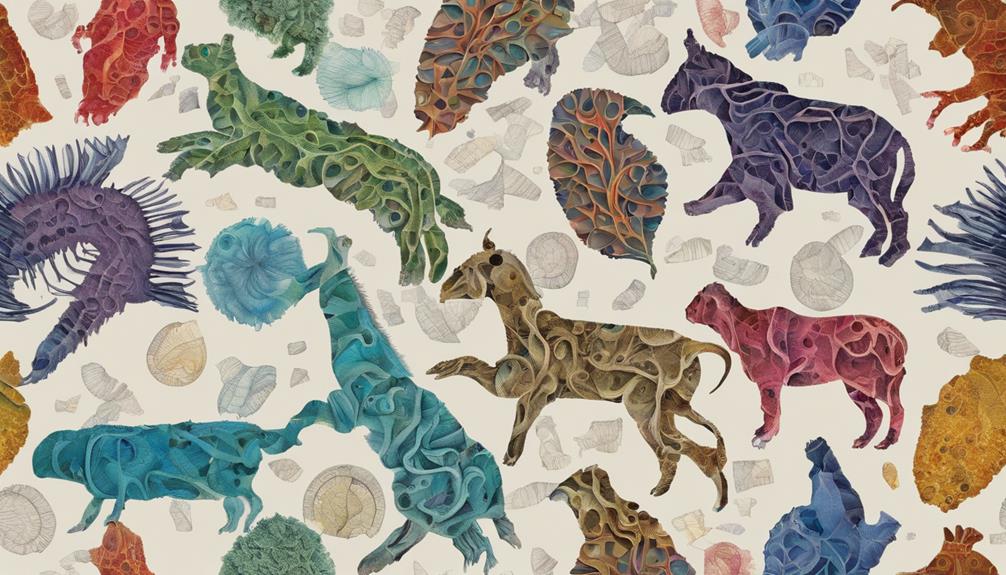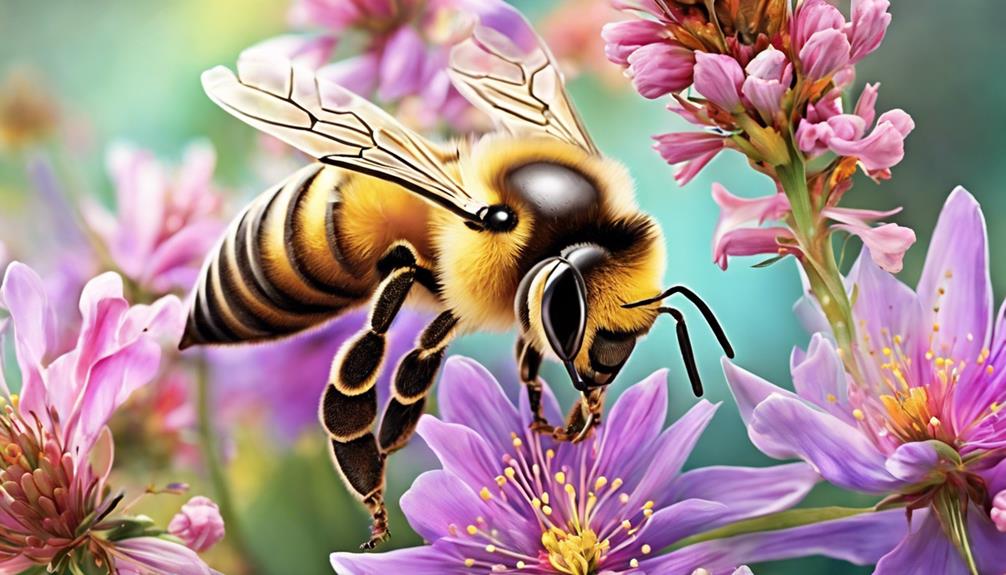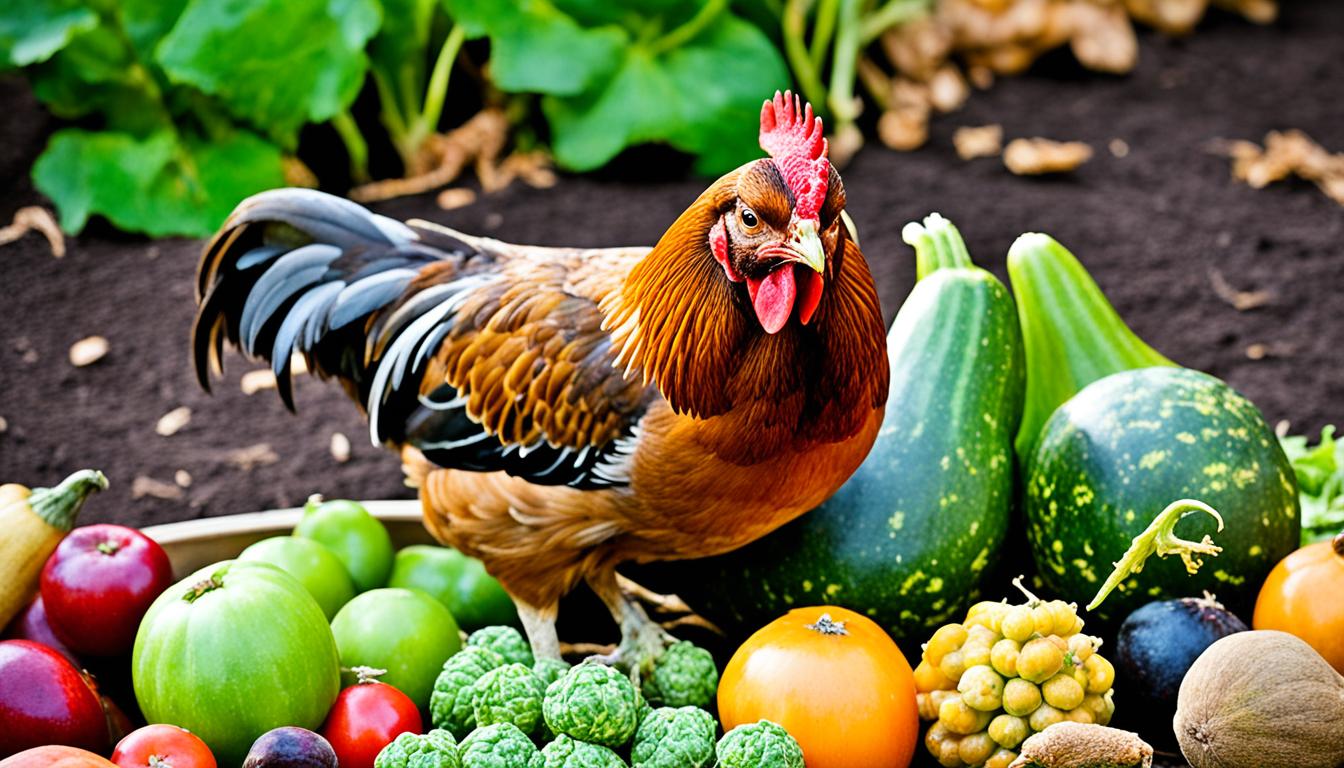To find the animal that works the hardest, just look to the banded mongooses in Central and Eastern Africa. Their cooperation ensures the survival of the group through their unwavering dedication. Each member pitches in to care for the young in stable social units, a behavior that has been studied for more than two decades. Hormones also play a crucial role in influencing their behavior. Heightened stress levels can decrease their caregiving efforts, impacting their future actions. By analyzing fecal samples, researchers can gain valuable insights into their health and behavior. Studying the hard work of animals highlights the extraordinary lengths some creatures go to in order to thrive. Keep exploring to uncover more about the fascinating world of animal commitment and resilience.
Key Takeaways
- Measure energy expenditure relative to body size and activity levels.
- Consider animals' endurance in challenging environments.
- Evaluate daily tasks and effort required for survival.
- Analyze behavioral adaptations for efficient resource acquisition.
- Study migration distances and work output efficiency.
Banded Mongooses: Unveiling Their Work Ethic
Banded mongooses showcase an unmatched work ethic within their stable social groups in Central and Eastern Africa. Much like worker ants, these mongooses collaborate to secure food sources and maintain their complex societies. Each member plays a crucial role in the group's success, whether it's foraging for food or caring for the young. Their cooperative nature guarantees the survival of the entire group, emphasizing the significance of teamwork in their society.
Observing banded mongooses at work reveals a fascinating dynamic where individuals work together seamlessly, much like a well-oiled machine. They exhibit a level of coordination and dedication that's truly remarkable in the animal kingdom. By understanding how these mongooses cooperate and communicate to achieve common goals, we can gain valuable insights into fostering teamwork and efficiency in our own lives.
Studying the work ethic of banded mongooses sheds light on the power of collaboration and mutual support in achieving success, making them an intriguing subject for further exploration.
Hormone Levels in Animal Behavior

Stress hormones are crucial in shaping how animals behave. These hormones, like glucocorticoids, have a significant impact on behavior.
Hormones and Behavior
Analyzing hormone concentrations in fecal samples provides valuable insights into understanding animal behavior. Hormones, like stress hormones and glucocorticoids, play a significant role in shaping behaviors within the animal kingdom.
By studying these hormone levels, we can uncover how animals respond to various stimuli and situations. Research indicates a strong link between hormone levels and behavior, showing that changes in stress hormones can influence how animals act.
Factors such as caregiving and social interactions can impact an animal's stress levels, which in turn affect their behavior. By delving into the world of hormones and behavior, we gain a deeper understanding of the complexities of the animal mind and how they navigate their environments.
Animal Hormone Levels
Understanding animal behavior through the analysis of hormone levels is a crucial aspect of studying the complexities of the animal mind. Hormone levels, particularly glucocorticoids, play an essential role in regulating how animals behave. Changes in stress hormones can lead to modifications in behavior, impacting various aspects of an animal's life.
By analyzing glucocorticoid hormone concentrations in fecal samples, researchers can gain insights into an animal's stress levels. Elevated stress hormones may influence future decisions regarding offspring care, highlighting the significance of hormone levels in animal behavior.
Research on hormone levels also helps us understand the physiological mechanisms behind carry-over effects in animal behavior, providing valuable information on how hormones shape an animal's actions and interactions with its environment.
Stress Impacts on Caregiving Efforts

While coping with increased stress hormones, banded mongooses may reduce their investment in caring for offspring. Stress levels play an important role in influencing the ability of individuals to provide care to young mongooses.
High stress resulting from caregiving responsibilities can have long-lasting effects on future caregiving behaviors, impacting the overall well-being of the group. Hormonal changes due to caregiving can greatly impact the willingness of mongooses to care for their pups, affecting the dynamics within the social group.
Understanding the physiological effects of stress on caregiving behaviors is essential in studying cooperative breeding species like banded mongooses, shedding light on the intricate balance between stress management and caregiving efforts in animal societies. By delving into how stress impacts caregiving, researchers can uncover valuable insights into the complexities of animal behavior and the mechanisms that drive social interactions within banded mongoose communities.
Physiological Insights From Fecal Samples

When we analyze fecal samples from banded mongooses, we can uncover valuable insights into their physiological processes. By examining the microbiome diversity and utilizing metabolite profiling techniques, we can understand the health indicators present in these samples.
These correlations provide a window into the intricate link between stress hormones, behavior, and overall well-being in banded mongooses.
Microbiome Diversity Analysis
Delving into the microbiome diversity through fecal samples sheds light on the intricate composition of gut bacteria in banded mongooses. By analyzing these samples, we can uncover the structure and function of the microbial community within the mongoose's digestive system. This exploration helps us understand the relationship between gut bacteria and the mongoose's health and behavior.
Through fecal sample analysis, researchers can pinpoint specific bacterial species present and their potential roles in mongoose physiology. This knowledge is vital for unraveling the digestive processes and overall well-being of banded mongooses.
Studying microbiome diversity in fecal samples provides valuable insights that can revolutionize our understanding of how these animals function on a physiological level.
Metabolite Profiling Techniques
Analyzing fecal samples through metabolite profiling techniques offers valuable physiological insights into banded mongooses' health and behavior. These methods help scientists understand hormone concentrations, stress levels, and the impact of carry-over effects on the animals.
For instance, by studying glucocorticoid hormones in mongoose fecal samples, researchers can explore how these chemicals affect the animals' overall well-being. The Wildlife Endocrinology Lab at Chester Zoo has tested hundreds of mongoose fecal samples using metabolite profiling to investigate the intricacies of their physiology.
This innovative approach enables us to uncover hidden details about the banded mongooses' internal processes, shedding light on the factors influencing their health and behavior.
Health Indicator Correlations
Through examining fecal samples from banded mongooses, correlations between health indicators and physiological insights can be uncovered. By analyzing stress hormone levels in these samples, we can understand how caregiving activities affect the animals' physiological responses. Hormone concentration measurements provide valuable information on the impact of stress on banded mongooses, shedding light on carry-over effects and future behaviors. The study of glucocorticoid hormones in fecal samples offers a unique window into the intricate relationship between stress and health in these fascinating creatures.
| Health Indicator Correlations | Physiological Insights From Fecal Samples |
|---|---|
| Stress hormone levels | Understanding impact of caregiving activities |
| Glucocorticoid measurements | Revealing physiological responses to stress |
| Hormone concentration | Insights into carry-over effects |
| Future behaviors | Influence of stress on banded mongooses |
Wildlife Endocrinology Lab Findings

In our analysis of hundreds of mongoose fecal samples at the Wildlife Endocrinology Lab at Chester Zoo, we uncovered crucial insights into the hormonal mechanisms driving behavioral carry-over effects in banded mongooses. By examining glucocorticoid hormones in these samples, we've gained a deeper understanding of how stress hormones play a role in shaping social interactions and cooperative behaviors within mongoose populations. This research not only enhances our knowledge of the physiological underpinnings of animal behavior but also sheds light on the intricate ways in which hormonal processes influence group dynamics.
The findings from our lab have significant implications for the conservation and management of cooperatively breeding species like banded mongooses. By elucidating the link between hormonal regulation and cooperative offspring care, we're better equipped to develop strategies that support the well-being of these animals in both captive and wild settings. Through our collaboration with Chester Zoo, we continue to advance our understanding of the complex interplay between hormones and behavior in wildlife, contributing to the broader field of animal science.
Carry-Over Effects on Offspring Investment

Our investigation into banded mongooses' stress hormone levels reveals significant impacts on their future investment in offspring. Increased stress hormone levels can diminish the caregiving behaviors of banded mongooses towards their young. This carry-over effect occurs when the stress from caring for current offspring hinders individuals from providing adequate care to future generations. Studies conducted in Uganda have shown these effects, demonstrating a clear link between stress levels and reduced parental investment in banded mongoose populations. Understanding the physiological mechanisms behind these carry-over effects sheds light on how stress can influence future parental behaviors in these animals.
| Effects of Stress Hormones on Offspring Investment | Impacts on Banded Mongooses |
|---|---|
| Reduces caregiving behaviors towards young | Decreased parental investment |
| Inhibits care for future offspring due to stress | Impacts future generations |
| Demonstrates link between stress levels and parental care | Important for population dynamics |
These findings highlight the importance of managing stress in banded mongooses to secure the well-being and survival of future offspring.
Cooperative Breeding Behavior Studies

Studying banded mongooses' cooperative breeding behavior reveals a fascinating dynamic within their stable social groups in Central and Eastern Africa. These small carnivores display remarkable levels of cooperation, with all group members pitching in to care for the offspring. This cooperative offspring care isn't just a probe; it's a long-term commitment that has been observed for over two decades. The dedication these mongooses show in caregiving highlights the intricate social structures within their groups.
Researchers have explored into the effects of stress hormones on caregiving behaviors in banded mongooses to gain a deeper understanding of their cooperative breeding dynamics. Studies, such as those conducted at Chester Zoo's Wildlife Endocrinology Lab, have uncovered physiological mechanisms that shed light on how stress hormones can impact future investment in offspring. By unraveling these complexities, scientists are piecing together the puzzle of cooperative breeding in banded mongooses, offering insights into the inner workings of this hard-working animal society.
Implications of Stress on Animal Behavior

Exploring the impact of stress on banded mongooses' caregiving behaviors reveals crucial insights into the complex dynamics of animal behavior. When banded mongooses experience heightened levels of stress hormones, their dedication to caring for future offspring may diminish. Research indicates that under high stress, these creatures struggle to provide adequate care to their young.
Moreover, the effects of stress from nurturing pups can persist, influencing the behavior of banded mongooses in the future. This intricate relationship between stress and caregiving in banded mongooses is influenced by physiological mechanisms such as changes in glucocorticoid hormones, which regulate behavior. Understanding how stress affects caregiving behaviors in these animals not only sheds light on their behavior but also emphasizes the intricate nature of animal interactions.
Understanding Hard Work in Animals

When considering the remarkable feats of endurance and strength displayed by various animal species, it becomes evident that hard work in the animal kingdom takes on diverse and awe-inspiring forms. From the Arctic Tern's annual 12,000-50,000 mile migration to the ant's ability to lift objects 50 times its body weight, animals showcase unparalleled dedication and perseverance.
Shrews, with their fast metabolisms, must tirelessly search for food to survive, facing the risk of starvation within a mere 3 hours of inactivity. Honeybees tirelessly visit approximately 8000 flowers daily to collect nectar, producing a thimbleful of honey after extensive effort. Earthworms contribute significantly to soil health by turning up to 40 tons of earth per acre annually, enhancing aeration and fertility.
Through these examples, we can begin to grasp the incredible work ethic and determination that exist throughout the animal kingdom. Understanding the various forms of hard work in animals sheds light on the importance of perseverance and dedication in achieving remarkable feats in nature.
Frequently Asked Questions
What Is the Most Hard Working Animal?
The most hardworking animal is the Arctic Tern. Flying 12,000-50,000 miles in 90 days annually, this bird's epic migration journey showcases incredible endurance and dedication. Its work ethic and physical capabilities are truly remarkable.
What Animal Represents a Hard Worker?
When I think about hard workers in the animal kingdom, the first creature that comes to mind is the ant. These tiny insects impress me with their ability to lift objects 50 times their weight and collaborate efficiently in teams.
Who Is the Hardest Worker Among the Animals?
I believe the hardest working animal is the honeybee. They tirelessly collect nectar from thousands of flowers to produce honey, maintain hive temperature, and gather pollen. Their intricate work ethic and teamwork make them exceptional.
Which Is the Most Laborious Animal?
As for the most laborious animal, ants shine with their incredible strength and teamwork. They lift 50 times their weight and collaborate efficiently. Witnessing their diligence and collective effort is truly inspiring in the animal kingdom.
What Makes Silent Animals the Hardest Working?
Some animals are masters at silent work, excelling in stealth and precision. For example, 7 silent animals masters at hunting include owls, cougars, and snakes. They rely on patience, agility, and keen senses to secure their next meal without making a sound, making them the hardest working in their stealthy approach.
Conclusion
Finally, banded mongooses are truly the 'hardest working animals' in the wild. Through studies on their hormone levels, stress impacts, and cooperative breeding behavior, we've gained valuable insights into their work ethic and caregiving efforts.
By examining fecal samples and carry-over effects on offspring investment, we can better understand the implications of stress on animal behavior. Remember, hard work pays off in the animal kingdom too!










